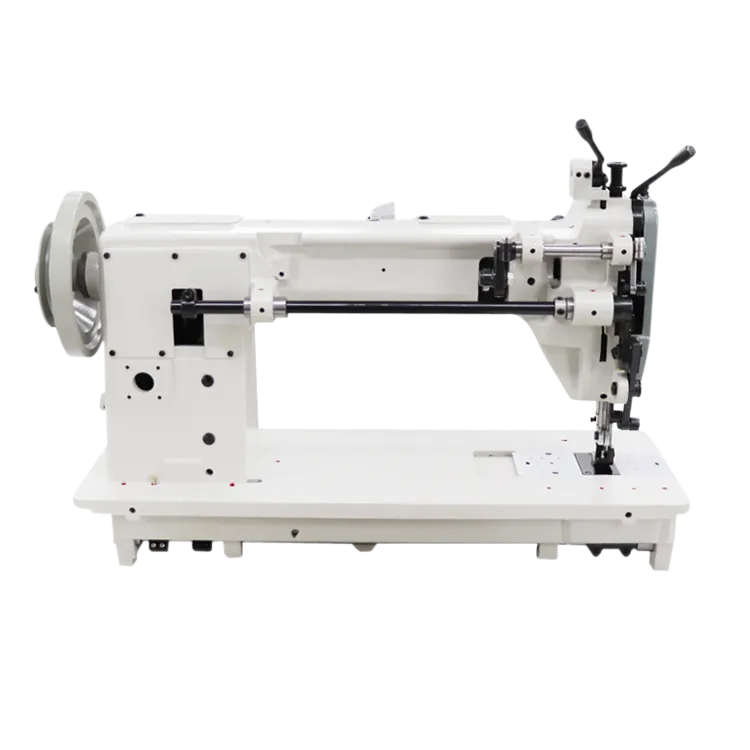sewing machine that can handle leather
Choosing the Right Sewing Machine for Leather Crafting
When it comes to sewing projects involving leather, having the right tools is essential to achieve professional results. Leather is a unique material that requires precision, strength, and specialized techniques. Not all sewing machines are created equal, and selecting the right one can make all the difference in your leather crafting endeavors.
Understanding the Characteristics of Leather
Leather is a durable and versatile material, but it can be challenging to sew due to its thickness and texture. Unlike fabric, leather can be slippery and has a tendency to slip while sewing. Additionally, the thickness of the leather can vary significantly, from lightweight lambskin to heavyweight cowhide. This variability demands a sewing machine that can handle multiple thicknesses without jamming or causing damage to the leather.
Essential Features of a Leather Sewing Machine
When searching for a sewing machine capable of handling leather, there are several key features to consider
1. Powerful Motor A machine with a strong motor is essential for sewing through multiple layers of thick leather. Look for machines with heavy-duty motors designed specifically for thicker materials.
2. Walking Foot A walking foot or a dual feed system helps to evenly guide the leather through the machine. This feature prevents the leather from shifting, which is crucial for straight seams and ensuring precise stitching.
3. Needle and Stitch Types The right needle is vital for sewing leather. Leather needles have a wedge-shaped point that easily pierces through the material without causing damage. Additionally, a sewing machine that can handle various stitch types, such as straight, zigzag, and even decorative stitches, will give you greater versatility.
4. Adjustable Presser Foot Pressure Being able to adjust the presser foot pressure allows you to accommodate different leather thicknesses. This feature helps prevent the leather from being overly compressed, which can lead to uneven stitching.
sewing machine that can handle leather

5. Heavy-Duty Construction A sturdy, metal construction is particularly important when working with leather. Plastic machines may struggle under the strain of heavy materials, while a robust metal machine will provide stability and durability.
6. Ease of Use and Maintenance While functionality is critical, a user-friendly interface can make the sewing process more enjoyable. Look for machines with clear instructions, easy threading mechanisms, and simple bobbin systems. Regular maintenance is also essential for longevity, so consider machines that are easy to clean and service.
Recommendations for Leather Sewing Machines
There are several models on the market that cater specifically to leather sewing enthusiasts. Here are a few renowned options
- Singer Heavy Duty 4423 This machine is well-known for its powerful motor and ability to handle thick fabrics, including leather. It features a walking foot and a variety of built-in stitches, making it a great entry-level option for leather crafting.
- Brother PQ1500SL This is a high-speed quilting and sewing machine that can handle layers of leather with ease. Its adjustable presser foot pressure and walking foot feature make it suitable for various leather projects.
- Juki TL-2010Q A favorite among quilting and leather crafting enthusiasts, this machine boasts a robust build and a strong motor. The Juki also includes a walking foot attachment, allowing for smooth feeding of multiple layers.
Conclusion
Sewing leather can be incredibly rewarding, allowing crafters to create everything from bags to jackets. However, it requires careful consideration when it comes to the choice of sewing machine. By selecting a machine with the necessary features to tackle leather, you’ll be well on your way to producing beautiful, high-quality leather projects. Investing in a suitable sewing machine not only enhances your crafting experience but also allows you to explore the limitless possibilities of leatherwork. Happy sewing!
-
Boost Production Efficiency with a Pattern Sewing MachineNewsAug.29,2025
-
Industrial Excellence with the Best Heavy Duty Sewing MachineNewsAug.29,2025
-
Precision and Power with the Best Pattern Sewing MachineNewsAug.29,2025
-
Reliable Bulk Packaging Starts With the Right FIBC Sewing MachineNewsAug.29,2025
-
Advanced Packaging Solutions: Elevate Productivity with Jumbo Bag Sewing Machine and Industrial Stitching EquipmentNewsAug.29,2025
-
High-Performance Solutions for Bulk Packaging: FIBC Sewing Machine and MoreNewsAug.29,2025
-
Maximize Efficiency with an Industrial Cylinder Arm Sewing MachineNewsAug.28,2025


























